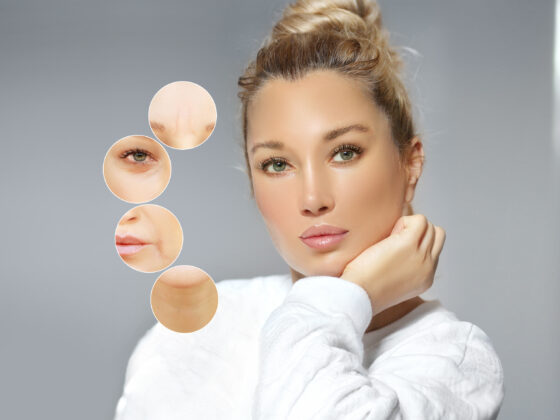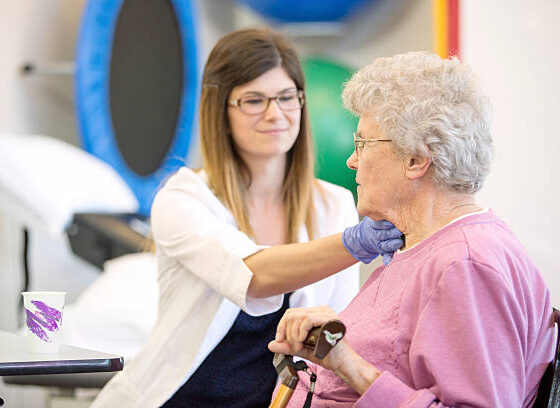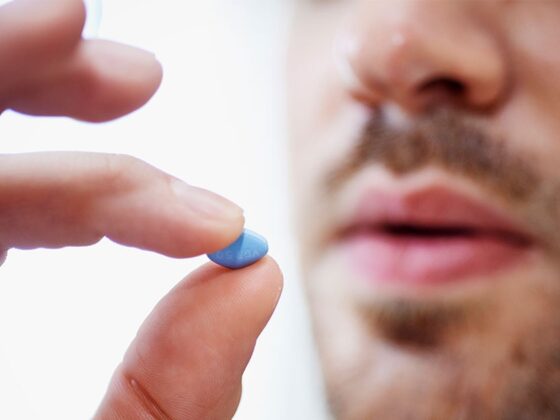In recent years, red light therapy has emerged from the shadows of alternative medicine into the spotlight of mainstream health and wellness. What was once considered a fringe treatment is now backed by hundreds of scientific studies and used by professional athletes, dermatologists, and everyday people seeking natural ways to improve their health. But what exactly is red light therapy, and does science really support the bold claims being made about its benefits?
Red light therapy, also known as photobiomodulation or low-level laser therapy, involves exposing the body to specific wavelengths of red and near-infrared light. These wavelengths, typically ranging from 660 to 850 nanometers, penetrate the skin and are absorbed by cells throughout the body. Unlike the harmful ultraviolet rays from the sun that can damage skin, red and near-infrared light wavelengths are considered safe and therapeutic when used properly.
The concept might sound like science fiction, but the underlying mechanism is surprisingly straightforward. When cells absorb these specific light wavelengths, they trigger a cascade of biological processes that can enhance cellular function and promote healing. The primary target is the mitochondria, often called the powerhouses of our cells, which use this light energy to produce more ATP, the fundamental energy currency that powers virtually every process in our bodies.
Understanding How Red Light Therapy Works
To understand why red light therapy can be so effective, we need to dive into what happens at the cellular level when our bodies are exposed to these therapeutic wavelengths. The process begins when red and near-infrared photons penetrate the skin and reach the mitochondria within our cells. These cellular powerhouses contain an enzyme called cytochrome c oxidase, which plays a crucial role in the final step of cellular respiration.
When this enzyme absorbs red and near-infrared light, it becomes more efficient at its job of helping cells produce energy. This increased energy production doesn’t just make cells work better in general; it specifically enhances their ability to repair damage, reduce inflammation, and carry out their specialized functions more effectively. Think of it like giving your cells a shot of espresso that helps them work at their peak performance.
This enhanced cellular function creates a ripple effect throughout the body. Cells that are producing more energy can better maintain themselves, communicate with other cells, and respond to injury or stress. This is why red light therapy can have such wide-ranging effects on different aspects of health, from reducing pain and inflammation to improving skin appearance and accelerating healing.
Joint Pain and Inflammation Relief
One of the most well-researched applications of red light therapy is its ability to reduce joint pain and inflammation. For millions of people suffering from arthritis, sports injuries, or chronic pain conditions, this represents a potential game-changer in their treatment approach. The research in this area is particularly compelling because it addresses one of the most common health complaints across all age groups.
Studies have consistently shown that red light therapy can significantly reduce inflammation markers in the body while simultaneously decreasing pain levels. The anti-inflammatory effects occur because the enhanced cellular energy production helps immune cells function more efficiently, allowing them to resolve inflammation more quickly and completely. Rather than simply masking pain like many medications do, red light therapy appears to address some of the underlying causes of joint discomfort.
The pain relief benefits extend beyond just inflammation reduction. Red light therapy also appears to influence nerve function, potentially reducing the transmission of pain signals to the brain. This dual action of addressing both the source of pain and the perception of pain makes it particularly effective for people dealing with chronic joint issues. Many users report not just temporary relief, but sustained improvements in their pain levels and mobility over time.
Accelerated Muscle Recovery
Athletes and fitness enthusiasts have been among the earliest adopters of red light therapy, and for good reason. The research on muscle recovery is extensive and impressive, showing that regular red light therapy sessions can significantly reduce the time it takes for muscles to recover after intense exercise or injury.
The mechanism behind improved muscle recovery ties directly back to enhanced cellular energy production. When muscle cells have more energy available, they can more efficiently clear out metabolic waste products that accumulate during exercise, such as lactic acid. They can also more rapidly repair the microscopic damage that occurs during intense training, which is actually a normal and necessary part of the muscle-building process.
Studies have shown that athletes using red light therapy experience less muscle soreness, reduced inflammation markers, and faster return to peak performance compared to those using traditional recovery methods alone. This isn’t just about feeling better; objective measures of muscle function, strength, and endurance show measurable improvements when red light therapy is incorporated into recovery protocols.
Skin Health and Collagen Production
Perhaps no application of red light therapy is more visible than its effects on skin health and appearance. The research in this area has been particularly robust, with numerous studies demonstrating improvements in skin tone, texture, and overall appearance. The effects go far beyond surface-level changes, involving fundamental improvements in skin structure and function.
Red light therapy stimulates fibroblasts, the cells responsible for producing collagen and elastin, the proteins that give skin its strength, elasticity, and youthful appearance. As we age, collagen production naturally declines, leading to wrinkles, sagging, and other signs of aging. By enhancing the energy available to fibroblasts, red light therapy can help maintain or even increase collagen production, leading to firmer, more resilient skin.
The improvements aren’t limited to anti-aging effects. Red light therapy has also shown promise for various skin conditions, including acne, rosacea, and minor wounds. The enhanced cellular function helps skin cells regenerate more quickly and effectively, while the anti-inflammatory effects can calm irritated or problematic skin. Many users report improvements in skin clarity, reduced redness, and a more even skin tone after consistent use.
Wound Healing and Tissue Repair
The ability of red light therapy to accelerate wound healing represents one of its most clinically significant applications. Healthcare providers have increasingly incorporated this technology into treatment protocols for various types of wounds, from surgical incisions to chronic ulcers that have been resistant to other treatments.
The enhanced healing occurs through multiple mechanisms working together. The increased cellular energy production allows cells involved in wound healing to work more efficiently. This includes immune cells that clean up damaged tissue, fibroblasts that lay down new structural proteins, and epithelial cells that close wounds. The improved circulation that often accompanies red light therapy also ensures that healing tissues receive adequate oxygen and nutrients.
Research has shown that wounds treated with red light therapy typically heal faster, with less scarring and reduced risk of infection. The therapy appears to optimize the entire healing process, from the initial inflammatory response through the final remodeling phase where new tissue is strengthened and refined.
Enhanced Circulation
Improved blood circulation is another well-documented benefit of red light therapy, and it plays a crucial role in many of the other benefits we’ve discussed. Better circulation means that oxygen and nutrients can reach tissues more effectively, while waste products are removed more efficiently.
The circulatory improvements occur through several mechanisms. Red light therapy can cause blood vessels to dilate, increasing blood flow to treated areas. It also appears to stimulate the formation of new blood vessels, a process called angiogenesis, which can improve long-term circulation to tissues that may have been poorly supplied with blood.
These circulatory improvements have far-reaching effects throughout the body. Better circulation supports faster healing, improved muscle recovery, enhanced skin health, and even better cognitive function. For people with circulation issues, such as those with diabetes or peripheral artery disease, red light therapy may offer a non-invasive way to support vascular health.
Hormonal Effects and Testosterone Production
One of the more surprising discoveries in red light therapy research has been its potential effects on hormone production, particularly testosterone. While this area of research is still developing, several studies have suggested that red light therapy applied to specific areas of the body may help support healthy testosterone levels in men.
The mechanism appears to be related to the effects of red light on cellular energy production in hormone-producing tissues. The Leydig cells in the testes, which are responsible for testosterone production, contain numerous mitochondria and appear to respond well to red light therapy. Enhanced cellular energy production in these cells may translate to improved hormone synthesis.
While more research is needed to fully understand these effects, the preliminary findings are encouraging for men dealing with age-related declines in testosterone or other hormonal imbalances. The non-invasive nature of red light therapy makes it an attractive option for those seeking natural approaches to hormonal health.
Final Thoughts
Red light therapy represents a fascinating intersection of cutting-edge technology and fundamental biology. The growing body of research supporting its various applications suggests that this therapy may offer a safe, non-invasive way to enhance the body’s natural healing and regenerative processes. From reducing joint pain and inflammation to improving skin health, accelerating muscle recovery, and potentially supporting hormonal balance, red light therapy appears to work by optimizing cellular function at the most basic level.
While red light therapy isn’t a miracle cure, the scientific evidence suggests it can be a valuable tool in a comprehensive approach to health and wellness. As with any therapeutic intervention, it’s important to have realistic expectations and to use the therapy consistently and properly to achieve the best results. For those seeking natural ways to support their body’s healing processes and optimize their health, red light therapy offers a promising option backed by solid scientific research.
The future of red light therapy looks bright, with ongoing research continuing to uncover new applications and refine our understanding of how these therapeutic wavelengths can best be used to support human health. As the technology becomes more accessible and affordable, it’s likely that red light therapy will become an increasingly common part of health and wellness routines for people of all ages and backgrounds.









